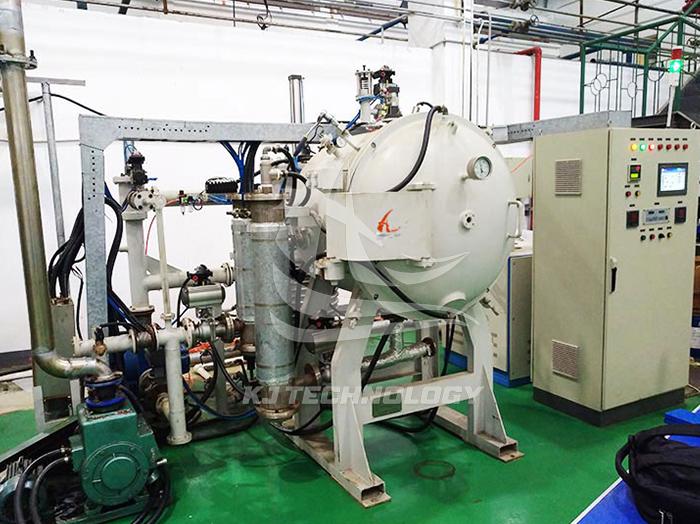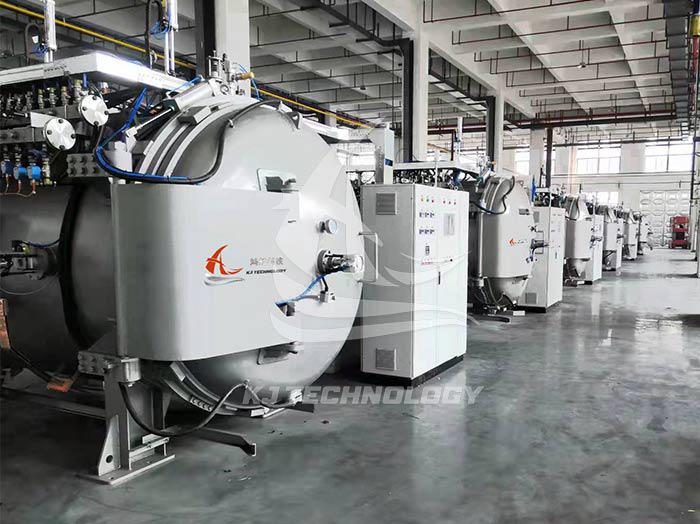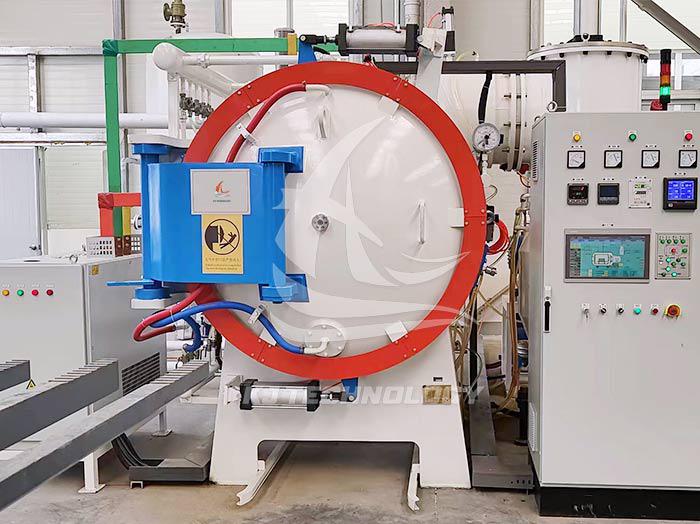Can a vertical graphite carbon tube vacuum furnace be used for sintering?
 10-17-2025 Author: KJ technology
10-17-2025 Author: KJ technology
The vertical graphite carbon tube vacuum furnace can be used for sintering, and its core principle is to achieve high-temperature sintering of materials through graphite carbon tube heating elements in vacuum or protective atmosphere. The specific analysis is as follows:
1. Sintering principle and equipment characteristics
Graphite carbon tube heating element
As a heating element, graphite carbon tubes have high electrical resistivity and excellent thermal conductivity. After being energized, they generate heat through the resistance effect, and the temperature can reach over 2300 ℃.
Graphite carbon nanotubes have strong chemical stability and are not easily oxidized or evaporated in vacuum or inert atmosphere, ensuring the purity of the sintering process.
Vacuum environment control
The vacuum system (mechanical pump+molecular pump) pumps the pressure inside the furnace to an ultra-low vacuum degree, removes volatile impurities, avoids material oxidation, and improves sintering purity.
Inert gas (such as argon) protection option, supports active atmosphere sintering (such as hydrogen reduction reaction).
Advantages of vertical structure
Vertical design facilitates uniform heating and gas emission of materials, avoiding temperature gradients caused by gravity in horizontal furnaces.
Electric lifting for furnace bottom loading simplifies the loading and unloading process and improves operational efficiency.
2. Applicability of sintering process
Material Type
Ceramic materials: alumina, silicon nitride, silicon carbide, etc., are densified through high-temperature sintering to improve bending strength and fracture toughness.
Metal materials: titanium alloy, hard alloy, etc., annealed under vacuum to eliminate internal stress and optimize crystal structure.
Nanomaterials: carbon nanotubes, graphene, etc., controlling temperature and gas ratio to regulate pipe diameter distribution or number of layers.
Composite materials: Metal ceramic composite materials achieve interface bonding through sintering, improving overall performance.
Process requirement matching
High temperature requirements: Graphite carbon tubes support sintering above 2300 ℃, meeting the processing needs of high-temperature materials such as hard alloys and ceramics.
Atmosphere control: Vacuum environment avoids oxidation, inert atmosphere supports reduction reaction, active atmosphere supports carbon deposition and other processes.
Temperature uniformity: The design of the insulation screen and radiation screen reduces thermal radiation interference, with temperature uniformity within ± 5 ℃, ensuring consistent performance of the sintered body.
3. Typical application cases
Ceramic seal sintering
Sintering alumina ceramics under vacuum to remove volatile impurities and improve the density and corrosion resistance of seals.
Preparation of Hard Alloy Cutting Tools
By vacuum sintering hard alloy powder, pores are eliminated, and tool hardness and wear resistance are improved.
Nanomaterial synthesis
Sintering carbon nanotubes in an inert atmosphere, controlling the temperature and gas ratio to regulate the diameter distribution, and optimizing material properties.
Rare earth purification
Using vacuum sintering to remove impurities from rare earth oxides, improve purity, and meet high-end application requirements.








